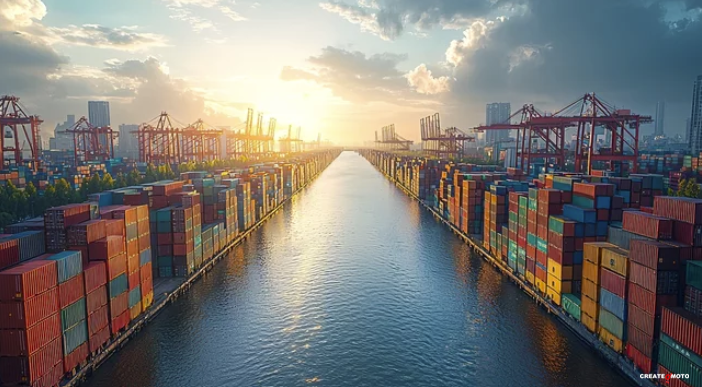
Global sourcing is like the weaving of threads across oceans, skies, and cultures—connecting businesses with opportunities, resources with needs. In a world shaped by the pulse of movement, the art of sourcing lies not just in obtaining goods but in understanding how to navigate relationships, quality, and sustainability on a global scale.
For businesses large and small, sourcing from the international market offers diverse benefits. Whether you’re a startup searching for affordable manufacturing or a corporation securing the finest materials, the steps you take will determine your brand’s success in the marketplace. From the intricacies of communication to the pulse of the supply chain, best practices in global sourcing help keep these threads unbroken and resilient.
The Importance of Strategic Planning in Sourcing
Global sourcing, like poetry, begins with intention. You don’t leap into the unknown; you carefully craft each step, understanding that success depends on thoughtful planning. The decisions made during the initial stages of sourcing will echo throughout your business’s future, influencing everything from costs to customer satisfaction.
One of the first steps is to clearly define your goals. Are you looking to reduce costs? Improve quality? Tap into new innovation? With these goals in mind, your approach to finding suppliers and manufacturers becomes sharper, more refined. A detailed sourcing plan includes:
- Risk assessment: Political instability, natural disasters, and economic shifts can all disrupt the flow of goods. Sourcing across borders means navigating these complexities with a plan in hand.
- Supplier research: Before establishing a partnership, businesses must dig deep into the reputation, reliability, and compliance of their suppliers. The temptation to go for the cheapest option can lead to quality and ethical issues that could damage a brand’s integrity. A helpful resource is Procurement Tactics, where you’ll find expert tips on how to assess and qualify international suppliers.
- Cultural understanding: Engaging with suppliers in different countries requires sensitivity to cultural norms. From negotiating prices to communication styles, these differences, if not respected, can lead to misinterpretations or conflicts.
Building Strong Supplier Relationships
Once you’ve identified your key suppliers, the relationship you build will determine the strength of your supply chain. A robust partnership requires trust, transparency, and regular communication. It is essential that both parties feel secure in their shared vision, aware of the responsibilities each side holds.
How do you build such relationships?
- Ongoing communication: Keep the dialogue open. Whether it’s through virtual meetings, site visits, or detailed email exchanges, regular communication allows businesses to monitor progress and address potential issues before they escalate.
- Transparency: Ensure that both parties are clear about the terms and expectations. Surprises in shipping times, product quality, or payment terms can erode trust.
- Mutual benefit: A good partnership is one where both parties benefit. Understand that your supplier is a crucial part of your business’s success. Treat them as a partner, not a distant entity. You can find further guidance on building supplier relationships at ThomasNet.
Navigating the Global Supply Chain with Precision
In the world of global sourcing, the supply chain is the lifeline that connects products from point A to point B. But it’s not a straight line; it’s a living, breathing entity, shaped by logistics, regulations, and sometimes, unforeseen circumstances. Managing the global supply chain requires a high level of precision and adaptability.
Here are key factors to consider:
- Logistics management: International shipping can be a complex web of freight forwarders, customs regulations, and border control issues. Choosing the right shipping methods and understanding local regulations are vital to ensuring timely deliveries.
- Quality control: Distance can often mean a lack of oversight. One of the best practices for global sourcing is implementing quality control measures at every stage of production. Regular audits, third-party inspections, and setting clear quality expectations upfront are just a few ways to maintain the standard of your products.
- Sustainability: The modern global market is increasingly influenced by the demand for ethical sourcing. Customers want to know that the products they buy are made in an environmentally and socially responsible way. Businesses must consider their suppliers’ impact on the planet, whether through carbon emissions, waste production, or labor practices. Learn more about sustainable global sourcing from UN Global Compact.
Flexibility in an Ever-Changing Market
No sourcing strategy is without its share of hurdles. Natural disasters, political upheaval, pandemics—these all serve as reminders that global sourcing is anything but static. Therefore, it’s critical that your sourcing strategy be as flexible as the sea, able to change course at a moment’s notice. Maintaining multiple suppliers, having backup plans, and being prepared for the unexpected can make the difference between meeting deadlines or facing delays.
Technology also plays a pivotal role in staying agile. Real-time tracking, digital platforms that manage procurement, and AI-driven forecasting tools help businesses stay ahead of the curve. Adaptation, after all, is the key to survival in a global marketplace that moves faster with each passing day.



0 Comments